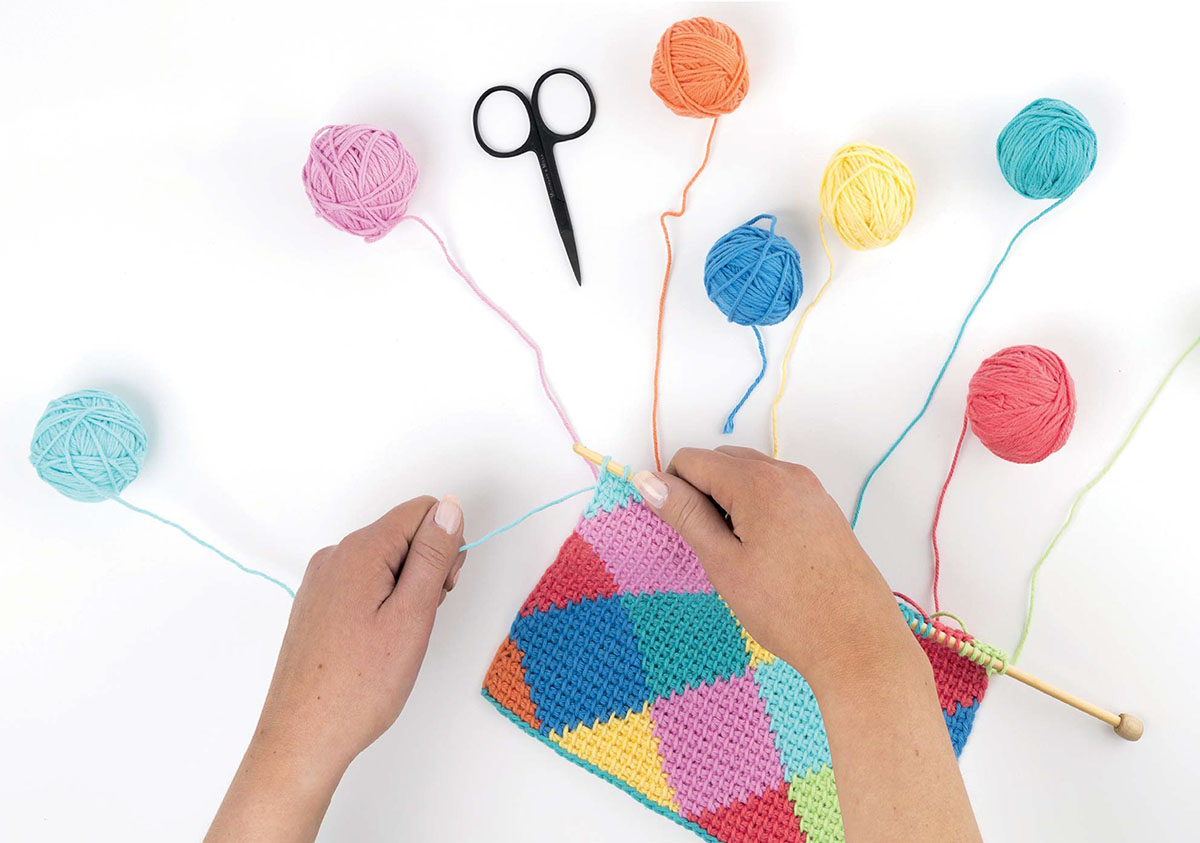
Often referred to as a fusion between knitting and crochet, Tunisian crochet produces a unique, woven-like fabric. Traditionally used to create thicker items such as blankets, it is also known as Afghan crochet.
Some stitches are unique to Tunisian crochet, yet crocheters and knitters alike will find similarities in the way some stitches are formed.
For example, crocheters will recognise stitches such as Double Crochet and Treble Crochet which are worked in exactly the same way as regular crochet except for the insertion point. Similarly, knitters will recognise stitches such as Tunisian Knit and Purl stitches. While not worked exactly the same way as in knitting, there are similarities in the principles of the stitches and certainly in the look of the finished stitch.
The key differences with Tunisian crochet compared to crochet are:
The work is never turned and you will always be working with the right side facing you.
Rows are worked in two stages: The first stage, the Forward pass, in which stitches are picked up and the loops are left on the hook. The second stage, the Return (or reverse) pass, is where the loops are linked together with a chain stitch as they are dropped back off the hook.
A long hook with a stopper or a cable is required to accommodate the loops being left on the hook. However if you are only making a small piece of Tunisian crochet, you can do this with a regular crochet hook.
A larger hook size is used than the one normally recommended for a particular yarn weight, to accommodate for the thicker fabric that Tunisian crochet produces.
The back of Tunisian crochet fabric has a different appearance than the front. Unlike regular crochet where the back of the fabric is very similar, Tunisian crochet stitches create small bumps at the back of your work, much like the back of knitted Stockinette stitch.
